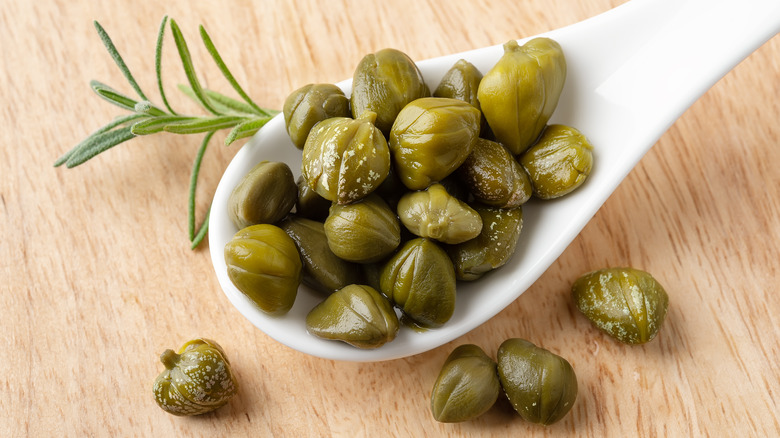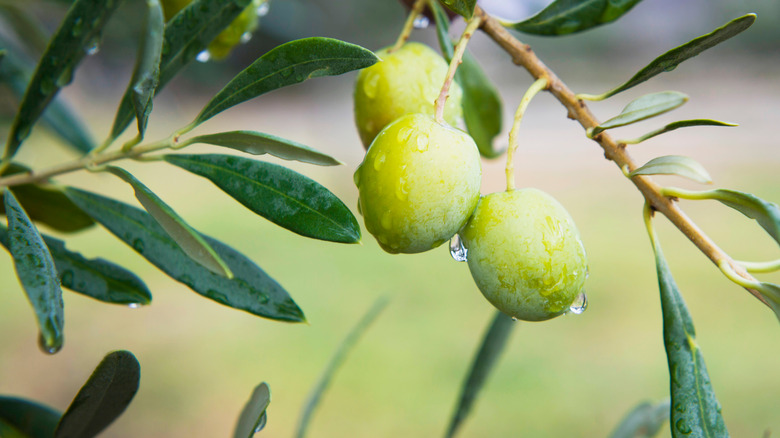The Best Ingredient Swap For Capers
If you're not well-versed in Mediterranean cuisine, capers are a staple in many dishes due to their abundance in that part of the world. Grown on bushes primarily in the Mediterranean and certain areas in Asia, capers are actually the unripened, edible buds of a fruit known as the caperberry, according to Food Network. This versatile ingredient is often used as a garnish, but pairs well with fish, chicken, sauces and dressings, a variety of salads, and even in pasta, adding an interesting, salty complexity to any dish. Common recipes using capers are dishes like chicken piccata, spaghetti puttanesca, and even lox and bagels.
The buds are typically dried and preserved in a brine that's responsible for their salty, funky taste; they're similar to pickles or green olives. Because of their tangy flavor, there are several ingredients that you can substitute for capers if you are hesitant about trying them, don't have any on hand, or are struggling to find them in your local grocery store.
Manzanilla olives and dill pickles
Manzanilla olives will be your best bet for caper replacements in terms of taste, texture, and appearance due to their acidic, savory flavor and their deep yellow-green color. They are grown in the southern regions of Spain, and are typically cured in lye, pitted, often stuffed with pimento or garlic (per The Spruce Eats), and preserved similarly to capers in brine, according to DeLallo. They are often used in pasta and chicken dishes, tapenades, hummus, and even in common happy hour cocktails.
It is important to remember the size difference between capers and olives if you are trying to keep the ingredient swap on the down-low. Instead of using whole olives to the recipe, consider finely chopping them before adding them to the dish. Wonderful Cook recommends using ½ tablespoon of chopped green olives for every 1 tablespoon of capers.
If you're an olive-phobe, pickles are also a good option. You've more than likely tasted some variation of a pickle, which goes through a brining process similar to capers and olives; and the citrus-like, earthy taste from the dill offers an additional layer of unique flavor that makes for a worthy caper substitute. Though pickles offer a similar taste and color to capers, you may not be able to get away with the texture as much as you would using the olives. To avoid this as much as possible, consider finely chopping them to minimize their crunchiness in the overall dish. Wonderful Cook recommends using 1 pickle slice for every tablespoon of capers.

